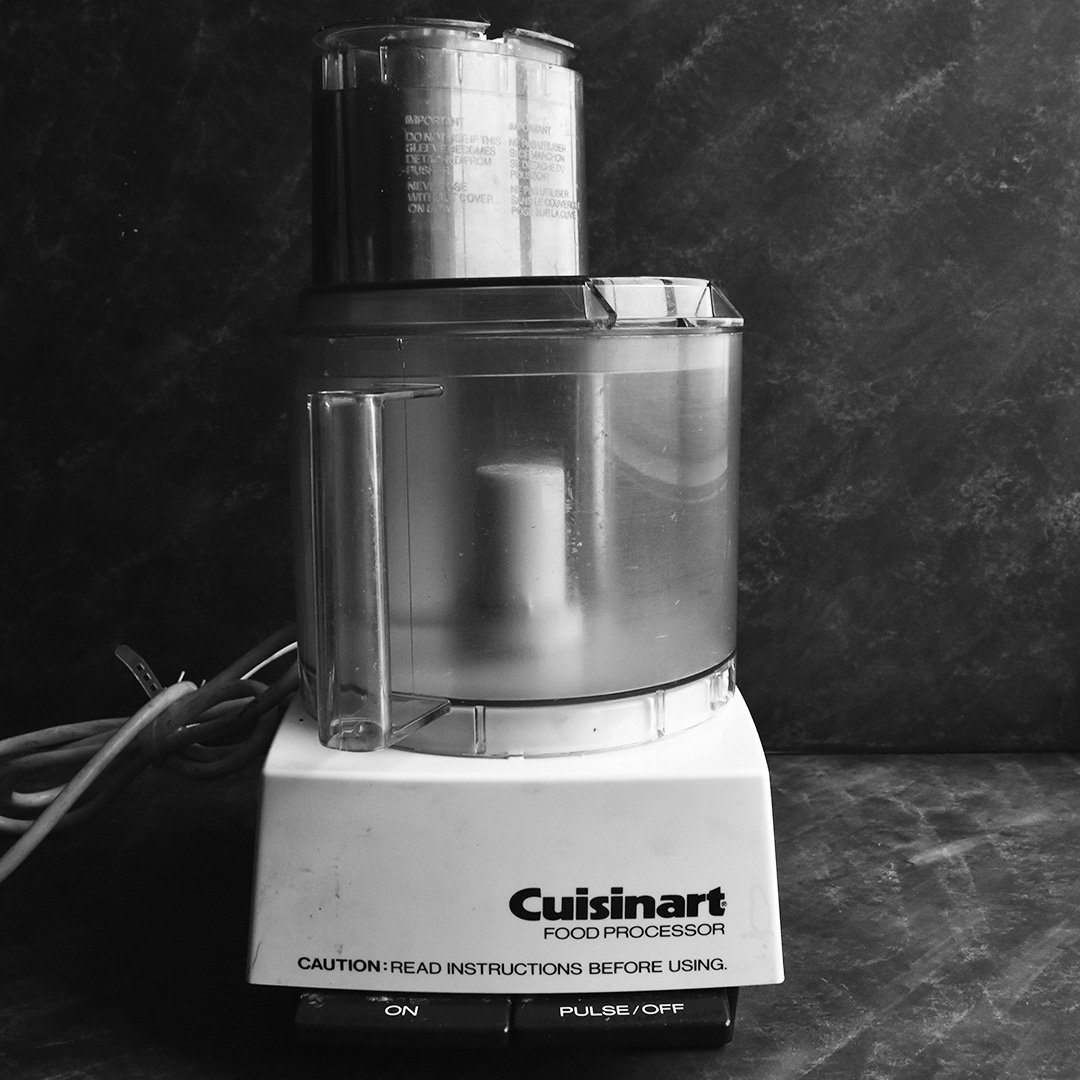Do I need a food processor and a blender?
The world of plant-based cooking opens up to so many possibilities when you have both a food processor and a blender. Some of my students ask, “Do I need a blender?” or “Do I need a food processor?” and I tell them that blenders and food processors are definitely not interchangeable.
Fundamental differences
When should you use a blender or a food processor? Blenders are great for mixtures containing significant amounts of liquid, whereas food processors work best with dry or semi-dry mixtures.
How a blender works. If you take a good look at your blender from above, you’ll notice that the bottom of the jar is rounded, and the blades, which are angled upward, are not sitting on the bottom of the jar. These characteristics create a vortex with liquid mixtures when the blades rotate at high speed (looking a bit like a hurricane from above), and that vortex brings the solid ingredients that are suspended in the liquid into repeated contact with the blades. Without the liquid, the required vortex can’t be created.
How a food processor works. The food processor, on the other hand, has a flat blade that sits at the bottom of a flat bowl, and with every turn, the blade cuts through the food without the help of a liquid vortex. The blade simply slices and re-slices whatever’s in its path.
Do I need a blender?
The blender excels with liquid-heavy mixtures. Blenders, especially high-speed blenders, can give these mixtures a perfect silky smooth texture that no other appliance can match.
Cashew cream
Creamy or pureed soups
Homemade nondairy milk
Plant-based mayonnaise
Salad dressings
Sauces
Some plant-based cheeses
Click here to read about the blenders I own and links to purchase.
Do I need a food processor?
The food processor works great with drier mixtures, especially when you don’t want them to be super-smooth.
Bean dips
Chopping fresh herbs
Chopping nuts
Falafel balls
No-bake energy balls
Nut-based pie crusts
Pesto
Regular pie crusts with flour and vegan butter
Turning cookies or graham crackers into crumbs
Turning bread or toast into crumbs
Vegan parmesan cheese
Veggie burgers
Click here to read about the food processor I own and a link to purchase.
Some foods are in the middle
There are a few recipes that can be made with the blender or the food processor. The blender can get these foods smoother than the food processor, but the blender often requires stopping and wiping the down the sides of the jar a few times, because the mixture is not particularly wet. I’ve noted which applicance I use with each – B for blender, F for food processor.
Cheesecake batter (B)
Date paste (F)
Hummus (B)
Nut butters (F)
Salsa (F)
Do you need more than one blender?
I have three blenders and use them for different purposes.
High-speed blender: this blender is the most powerful and creates the silkiest texture. It can handle large mixtures, even whole recipes of soups. The only limitation is that it can’t blend small recipes. It needs a critical mass to create the vortex that allows the blades to break everything down. You also have to be extremely careful with hot mixtures in the blender. Pressure from the steam can make the lid come off, and hot soup can injure you.
Bullet/personal blender: This smaller blender is not as powerful at the Vitamix, but I use it not just for smoothies but for small batches of cashew milk, salad dressings, sauces, and the like.
Stick (immersion) blender: This blender is the least powerful of the three, but it’s very handy and safe for pureeing soups or sauces right in their pans.
Click here to read about the blenders I own and links to purchase.
Do you need more than one food processor?
Thankfully no. I recommend a 10- to 12-cup food processor.
Conclusion
While there is some overlap between what the food processor and the blender can do, I’ve found that both appliances are indispensable in my kitchen. When we look at a Venn diagram, we often focus on the small middle section of overlap. But those big outer circles are critical, and that’s why having both appliances is best if you want unlimited potential in your kitchen.
My motto: Never make a smoothie in a food processor, or a veggie burger in a blender.

